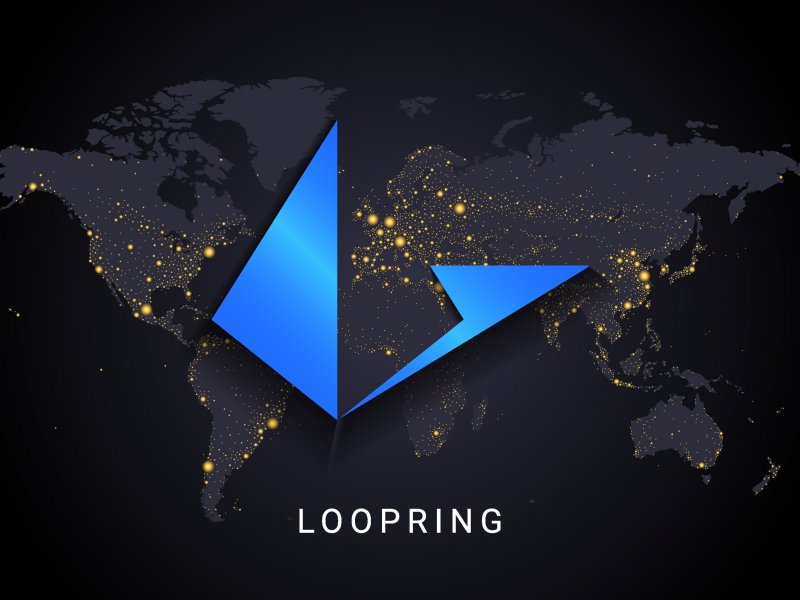
Coinposters
Loopring (LRC): What You Should Know

Loopring, one of a growing number of decentralized finance (DeFi) protocols, provides its platform by combining multiple cryptocurrencies, including its own LRC cryptocurrency.
Most prominently, Loopring claims that its platform will enable exchanges built on it to avoid the slow speeds and high costs associated with decentralized exchanges on Ethereum by utilizing a newer type of cryptography known as low rollups, or zkRollups.
What is Loopring?
Loopring (LRC) is a second-layer Ethereum protocol that allows anyone to create responsive DEXs. Notably, it was the first protocol to take advantage of the second layer advancements made possible by Ethereum’s introduction of the zkRollup protocol. It provides a wide range of powerful tools, protocols, and infrastructures to help DEX creation and operation. Here’s why Loopring continues to attract new users on a daily basis.
How it Works
Loopring’s architecture enables it to provide all of these advantages. In a novel way, the platform integrates powerful Ethereum smart contracts and ZK circuits. New users can quickly find everything they need to get started with Loopring. The platform explains how to create secure, scalable orderbook-based DEXs, AMMs, and payment apps.
The network employs Zero-Knowledge Proofs as one of its core technologies. This technology is a system that allows users to prove they have access to specific information without directly revealing any of the data. Traditional methods that gradually reveal vital information to the public provide less security than zero-knowledge proofs.
zkRollups use the same technique to combine hundreds of transfers into a single transaction, allowing for quick and cheap trades to take place outside of the Ethereum blockchain. These transactions are then settled on the blockchain, where zero-knowledge proofs are used to validate the accuracy of off-chain transactions.
Users must first send their funds to a smart contract managed by the protocol in order to begin trading on a Loopring exchange, which exchanges then offload the computation required to complete trades from the main Ethereum blockchain. This information includes things like a user’s account balances and order histories.
Loopring then settles transactions on the Ethereum blockchain to complete trades initiated off-chain. These trades are batch-processed in order to reduce costs and increase speed. Loopring claims that using this technique, it can perform over 2,000 trades per second.
Each batch of transactions is then added to the Ethereum blockchain with zero-knowledge proofs, allowing anyone to reconstruct the off-chain transactions. This gives users confidence that the transactions are genuine and have not been tampered with by unauthorized parties.
What Makes it Unique
Loopring offers numerous advantages to the market. For starters, Ethereum has the world’s largest Dapp and DeFi ecosystem. Loopring enhances Ethereum’s functionality and usability by providing a low-cost way to interact with this network. As a result, the platform has become an important saving tool for investors and developers.
Loopring also benefits from Ethereum’s full security guarantees. Ethereum, the world’s second-largest PoW network, is one of the most secure blockchains. Loopring demonstrated its dedication to security by launching with open-source code.
This code has been subjected to multiple third-party audits and has passed them all. Loopring allows developers to create complex DEXs, non-custodial AMMs, orderbook exchanges, payment protocols, and more.
Loopring has the same scalability as top exchanges. The network is built to batch-process thousands of requests off-chain, allowing for high throughput at low cost. Because less data is included, validating a block of transactions is faster and less expensive when using zkRollups and Loopring.
Traditional Ethereum-based DEXs, on the other hand, can settle 2-3 trades per second. Loopring allows for 2,025 trades per second. This scalability is extended to the Loopring network’s exchanges as well.
Bottomline
Loopring is an excellent example of how creative minds can devise novel solutions to blockchain problems. Ethereum is still playing an important role in the market. The protocol reduces the cost of interacting with Ethereum while also assisting in the network’s expansion via DEXs. As a result, the market capitalizations of Ethereum and LRC both rise.
Latest
Altcoins
09 May 2024
Altcoins
19 Apr 2024
Altcoins
16 Jan 2024
Altcoins
31 Aug 2023
Altcoins
24 Jun 2023
Altcoins
24 Jun 2023













